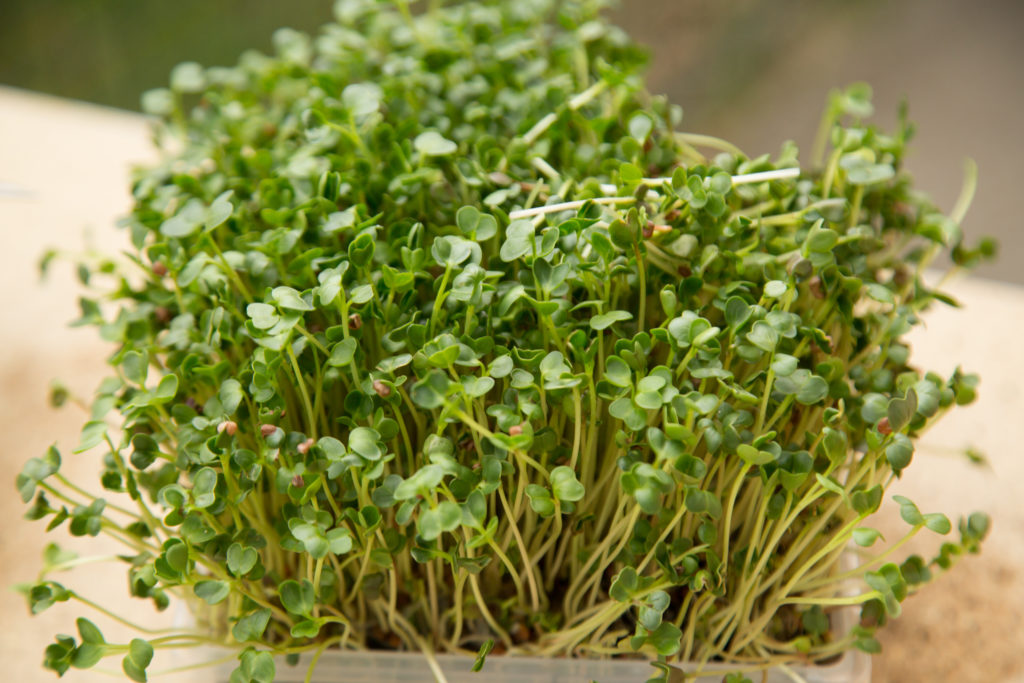Some call it micro-herbs, some refer to it as micro-vegetables, but the name that is perhaps most commonly used is microgreens. As the name suggests, microgreens are small, tender shoots of vegetables, herbs and cereals harvested just after the cotyledons or true leaves have emerged. Unlike sprouts, microgreens are grown on a substrate and can be consumed as early as 7-15 days after the sowing.
Author: Danijela Despotovic
Microgreens are a rich source of vitamins, minerals, amino acids and antioxidants. It has been proven to contain 4-60 times more vitamins and minerals compared to plants at complete technological maturity. It plays an important role in ridding the body of toxins and strengthening the immune system, and given that it is consumed fresh, there is no nutrient loss due to heat treatment.
They have an attractive appearance, with different textures and colors, a very intense flavour that ranges all the way from mildly sweet or sour to hot and spicy, which is why they make excellent garnishes and an appealing addition to almost any dish, widely used by chefs around the globe.
We can use it in salads, sauces, soups, sandwiches, fish and meat dishes, or else add them to fruit and vegetable smoothies.
The most popular varieties are radish, broccoli, basil, rocket, wheat, green peas, sunflower…
You do not need much experience, special tools or equipment to grow microgreens, in fact, high-quality seeds, water, substrate and a little willpower will do the trick.

The quality of cultivated microgreens depends on the quality of the seeds. The seeds used to grow microgreens should be organic. Apart from the seeds, the choice of substrate is also important. It is best to buy an organic growing media. The thickness of the potting soil layer ranges from 4 cm to 6 cm and depends on the size of the seed. The substrate should be watered before sowing the seeds.
Instructions for growing microgreens:
- Place a layer of substrate 3-4 cm thick in a suitable container and level it
- Prior to sowing, moisten the substrate with water spray
- Make a dense array of seeds on the surface of the substrate, but make sure thay are not on top of each other
- Spray with water and cover the microgreens leaving them in complete darkness for 2-3 days
- Uncover them when it’s watering time, optimally 3 times a day
- After seeds have sprouted, place the pot with the seeds in a well-lit place and water 1-2 times a day
Depending on the variety, the optimal temperature for seed germination and sprouting varies between 18-20 °C. The foil has a role to keep the seed moist and ensure better germination. As soon as the plants start to sprout, the foil is removed. From then on, it’s all about regular watering, but not excessively, because overwatering can cause mold and decay of microgreens.
After seeds have germinated, a well-lighted place will suit them best, so a window sill would be a wise choice. Distilled water or tap water that has rested for 24 hours is recommended for watering.
We hope that these useful tips for growing herbs will help you improve your diet in an interesting and simple way. You can watch the video on growing microgreens here.
